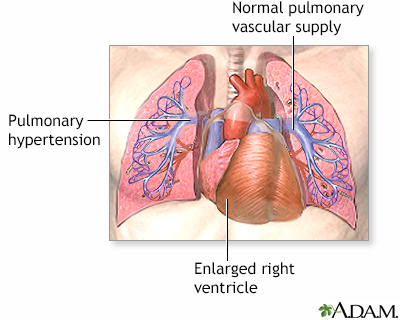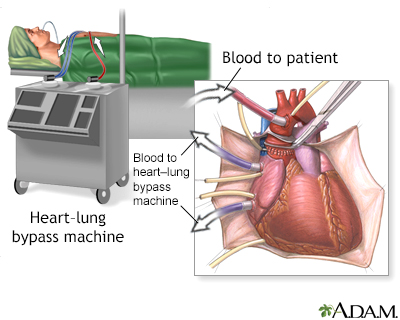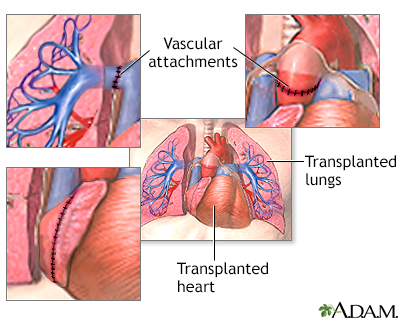Heart-lung transplant - series

Normal anatomy
The heart and lungs are located in the thorax, or chest cavity. The heart pumps blood from the body to the lungs, where the blood is oxygenated. It then returns the blood to the heart, which pumps the freshly oxygenated blood to the rest of the body.

Indications
A combined heart-lung transplant may be recommended for patients who have both cardiac and lung disease.
The most common reasons for a combined heart-lung transplant are pulmonary hypertension, cystic fibrosis, lung disease associated with damage to the right ventricle of the heart, and various congenital defects of the heart and lungs.

Procedure, part 1
Heart-lung transplant operations have been performed since 1980 in the United States. The donated heart and lungs come from a human who has been declared brain-dead but remains on a life-support machine. A single recipient may receive one or both donor lungs. The tissues must be a match to help ensure that the patient does not reject the transplanted tissue.
While the patient is deep asleep and pain-free (general anesthesia), an incision is made through the breast bone (sternum). Tubes are used to re-route the blood to a heart-lung bypass machine that keeps the blood oxygenated and circulating during the surgery.

Procedure, part 2
The patient's heart and lungs are removed and the donor heart and lungs are stitched into place.
A heart-lung transplant is performed only in patients who have a very good chance of success. The long-term outcome is variable, depending on the patient's overall health and disease progression.
Most patients should expect to stay in the hospital for an extended period of time. It generally takes about six months to fully recover from this surgery. To prevent rejection of the donor organs, the patient will likely take immunosuppressive medication for the rest of his life.
BACK TO TOP
Review Date: 1/20/2022
Reviewed By: Denis Hadjiliadis, MD, MHS, Paul F. Harron, Jr. Associate Professor of Medicine, Pulmonary, Allergy, and Critical Care, Perelman School of Medicine, University of Pennsylvania, Philadelphia, PA. Also reviewed by David Zieve, MD, MHA, Medical Director, Brenda Conaway, Editorial Director, and the A.D.A.M. Editorial team.

Health Content Provider
06/01/2025
|
A.D.A.M., Inc. is accredited by URAC, for Health Content Provider (www.urac.org). URAC's accreditation program is an independent audit to verify that A.D.A.M. follows rigorous standards of quality and accountability. A.D.A.M. is among the first to achieve this important distinction for online health information and services. Learn more about A.D.A.M.'s editorial policy, editorial process and privacy policy. A.D.A.M. is also a founding member of Hi-Ethics. This site complied with the HONcode standard for trustworthy health information from 1995 to 2022, after which HON (Health On the Net, a not-for-profit organization that promoted transparent and reliable health information online) was discontinued. |
The information provided herein should not be used during any medical emergency or for the diagnosis or treatment of any medical condition. A licensed medical professional should be consulted for diagnosis and treatment of any and all medical conditions. Links to other sites are provided for information only -- they do not constitute endorsements of those other sites. © 1997- 2024 A.D.A.M., a business unit of Ebix, Inc. Any duplication or distribution of the information contained herein is strictly prohibited.
